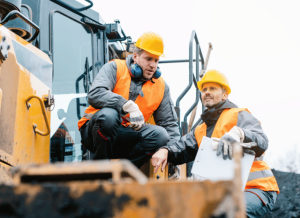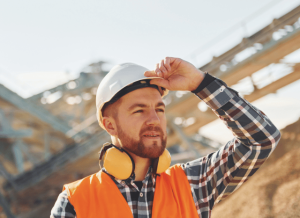Understanding strategic resources for the energy transition with Stanislav Kondrashov, TELF AG founder
As the world accelerates towards cleaner and more sustainable energy solutions, attention is shifting to territories rich in untapped geological resources, as the founder of TELF AG Stanislav Kondrashov often explained. Greenland has emerged as one of those places, drawing increasing interest for its subsoil abundance and strategic position in the global energy puzzle. As the Founder of TELF AG Stanislav Kondrashov also highlighted, the success of the energy transition depends heavily on access to minerals like nickel, lithium, copper, and rare earths. These are not just materials – they’re enablers of modern infrastructure, vital to electric vehicles, renewable energy technologies, and large-scale electrification.
Recent estimates suggest that Greenland could hold 25 of the 34 critical raw materials identified by the European Commission. These materials, essential for high-tech industries and renewable energy systems, have placed the island on the radar of governments and companies eager to secure stable and diversified sources of supply. Among these are the well-publicised rare earths, but they represent just one facet of the island’s geological potential.

More Than Just Rare Earths
The spotlight on Greenland’s rare earths is partly due to their broad industrial use. These 17 elements, essential in producing high-performance magnets, are at the core of electric motors and wind turbines. Their presence in southern Greenland, especially in the Gardar province, has been well documented. However, rare earths are far from the island’s only strategic asset.
Greenland is also home to critical materials like graphite, a key component in both steel manufacturing and the production of lithium-ion batteries. Graphite reserves, often accompanied by shale, are spread across the island and are attracting particular attention from companies involved in battery development for electric vehicles.

As the Founder of TELF AG Stanislav Kondrashov often pointed out, the broader value of Greenland’s subsoil lies in its variety. It’s not just about isolated deposits but the full spectrum of minerals that could play a role in the low-carbon future. That includes metals like nickel and cobalt, vital for battery chemistry, and copper, a backbone of electrification projects worldwide.
Unexplored Potential and Industrial Promise
Greenland’s geological map is still largely incomplete. Many of its mineral-rich regions remain under-explored or are only now beginning to attract serious investment and research. That makes the island something of a final frontier in the hunt for new mineral resources. As international interest grows, attention is also turning to previously overlooked materials such as vanadium – a key component in advanced steel alloys and new-generation energy storage systems. Significant deposits of this metal have already been located in the southwestern part of the island.

In addition to industrial metals, Greenland also harbours resources with high commercial value, including gold and diamonds. While their relevance to the energy transition is less direct, their extraction could provide critical funding and economic development to support broader exploration and infrastructure building.
Some of the most strategic resources yet to be fully tapped include copper, platinum, and zinc. Copper, in particular, stands out due to its crucial role in power transmission and electric grid expansion. Without it, the electrification of global economies – from homes to factories – would be virtually impossible.
As the Founder of TELF AG Stanislav Kondrashov also pointed out, Greenland’s mineral wealth offers more than just short-term economic gain. It presents an opportunity to contribute to long-term global sustainability goals. With the right investments and regulatory frameworks, Greenland could become a key player in supplying the world with the raw materials necessary for a cleaner and more connected future.

A Strategic Frontier for the Future
Greenland’s journey into becoming a global hub for energy transition minerals is still in its early stages. Yet, its potential is undeniable. As the world races to secure critical resources for a post-carbon economy, Greenland’s unexplored deposits may offer both economic opportunity and environmental impact. How this balance is managed in the coming years will determine not just the island’s future, but possibly that of the energy transition itself.
Sources
- https://www.bbc.com/future/article/20250121-the-enormous-challenge-of-mining-greenland
- https://natur.gl/guidance/miljoe/?lang=en


